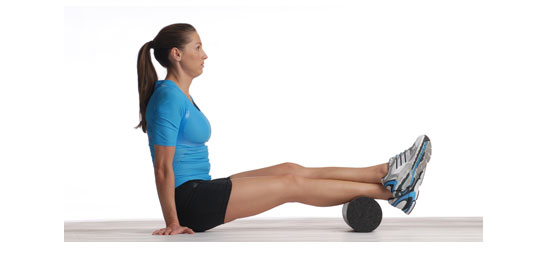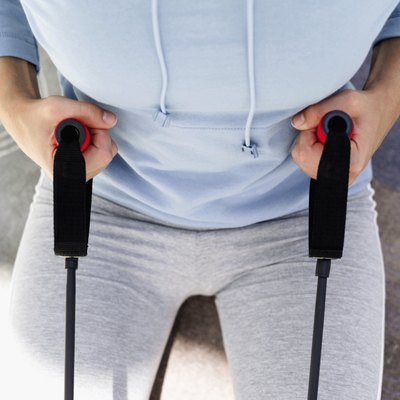Wouldn't it be nice to end every active week with an intense deep-tissue massage to help ease your muscles? But since we can't always spring for a trip to the spa, here's what we can do — use the foam roll at the gym.

You may have seen people in the gym foam rolling and think it's just for serious athletes or gym rats, but that's not the case. But there are many reasons why massaging out the tight knots in muscles is an important part of your workout routine, even if you already stretch regularly. Why? Because no matter how much you stretch, the build up of fascia that creates muscle knots that won't go away, which can lead to many different problems.
I've been consistently seeing my trainer for a few weeks, and the aftermath is clear: not only am I working new sets of muscles (meaning new ways of being sore) but I'm also realizing how much more I need to be foam rolling. My trainer, Tim Rich at Crunch Gym, says that everyone, avid athlete or not, should be using those long spongy cylinders daily. Read on for why and how you should be foam rolling every day.
- Helps prevent common injuries. One of the most important reasons for a regular foam-rolling routine is to prevent those often too common exercise-related injuries. Many runners, for example, become painfully well acquainted with their IT band if they don't take care to massage the band of tissue. IT band syndrome and other similar flare-ups can be caused by too-tight muscles. Foam rolling every day ensures you are massaging away fascia buildup in your muscles, in order to help prevent those areas from becoming injury trigger points.
- Helps you de-stress. Had a hard day? Foam roll your worries away. Digging for those knots "releases tension that is built up in the connective tissue to keep you less stressed," says Tim. He recommends a simple all-over body routine in order to combat the "desk posture blues" that happen from sitting too long in the office.
- Keeps you flexible. Building up your flexibility is key for any fitness routine, Tim says, which means you constantly should be stretching and doing exercises that'll help you gain flexibility. Stretches that lengthen your hip flexors, for example, can help combat tightness from sitting as well as lower back pain.
The more regularly you use a foam roll on your tight muscles, the less painful it'll be. Ready to roll? Here are five important stretches you should be doing with a foam roll, and a video on how to foam roll your quads and IT band for elongated, flexible, and injury-free thighs and happy knees.
Original article and pictures take media1.popsugar-assets.com site
